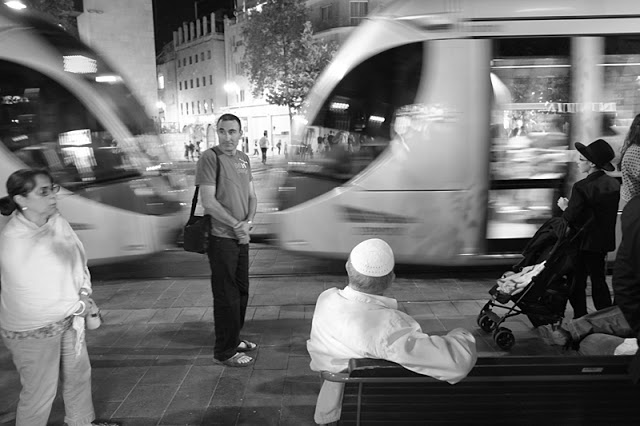In The Midst of Its Internet Resurgence, Has Street Photography Lost Its Meaning?
By Mason Resnick
Photo © Mason Resnick
Sure, there was plenty of spontaneous photography out there and much of it was very good. Sports and photojournalism were the last bastions of "straight" photography left. Of course those of us who continued shooting on the street non-stop never lost faith.
Then, in the 00's came the Web, and street photography started to get noticed again.
Photo © Mason Resnick
In the last few years came mirrorless, interchangeable-lens (and fixed-lens) compact digital cameras with eye-level viewfinders, manual focus and quick response time. At the same time, an explosion of photo-friendly social media such as Flickr, Instagram, Twitter, and Facebook have helped to spread street photography like never before.
Street photography, it seems, is back. More and more photographers want to learn about it. The term is bandied about on Facebook and Twitter, and there are numerous Facebbok and Flickr groups devoted to sharing and commenting on street photography. There's even a hashtag! After decades of obscurity within the world of photography and facing the upturned noses of the folks who Know Art, you can now search for #streetphotography.
And that's where we run into problems: When I search for #streetphotography, what I find is often anything but Street Photography. It seems many photographers are tagging their photos as street photography without having any real knowledge of what the term means. How do I know? I looked at the photographs.
So, let's define what street photography is, and is not—and tackle the gray areas and exceptions.
A street photo is a candid photo taken in a public place. That's it, really.
However, based on a rather discouraging hashtag search, I feel I must explain that street photography isnt (these are descriptions of actual photos I found that were hashtagged #streetphotography or #streetphoto):
• A posed photo of a person in a public place. That's an environmental portrait or street portrait.
• a nighttime photo of a city skyline from far away. That's a cityscape.
• a photograph of a building. That's an architecture photograph.
• an indoor photo of a flower. That's an indoor photo of a flower.
• a wedding photo in a wedding hall. That's a wedding photograph.
• a photo of trees. That's nature photography.
• a photo of three people drinking beer and smiling at the camera, which appears to be held by one of the people in the picture. That's a selfie.
Why would anybody think any of the above described photos (all of which were found in a single hashtag search on Twitter using #streetphoto and #streetphotography) were street photos? A few thoughts:
1. The hashtagger doesn't know. Education time.
2. The hashtagger thinks he or she knows, but actually doesn't. See #1.
3. The hashtagger is a washed up critic from the 80s and 90s who is trying to cause trouble.
I'm placing my money on #s 1 and 2.
Photo © Mason Resnick
Can there be trees, city skylines, buildings, flowers, weddings, trees and people drinking beer in street photos? Of course! But when they're isolated from anything else, and they're not playing off other elements in the photo, the definition of the kind of photo changes. I'm not saying any of the above were bad photos. Some of them were quite good! However, they do not fit the definition of a street photo.
Let's repeat that definition: Street photography is the act of taking candid pictures in public places.
Welcome to the gray area.
I think the gray area definition can be expanded to photos that are spontaneous and reflect the photographer's reflexes, rather than premeditated thought. Images that do not refer to previous images but show something new and uniquely photographic would probably qualify. Yes, you can shoot street photos in weddings—as long as you're staying off the script and getting unplanned and unselfconscious moments or interesting/funny/ironic juxtapositions, you're good.
Photographing a building or trees could also be street photography—if something else is going on within the frame at the same time. The interaction between elements within the frame (presumably some of those elements either human or animal) help an image deserve the #streetphoto tag.
While street photography has become a popular buzzword, as with so many creative endeavors that have jumped the shark, I fear it is losing its definition as folks who don't really understand it jump on the bandwagon.
The best offense, I believe, is knowledge, and sharing great examples of successful street photos. Sharing the works of the greats such as Garry Winogrand, Cartier-Bresson, recently discovered greats such as Vivian Meier, and relative newcomers such as Jeff Mermelstein, Richard Bram and others, is also a good way to focus people on what street photography is—and isn't.
Want to learn more about street photography from someone who has been doing it continuously since 1976? Check out my online class, "Street Photography: Making Chaos Interesting."





Comments
Post a Comment